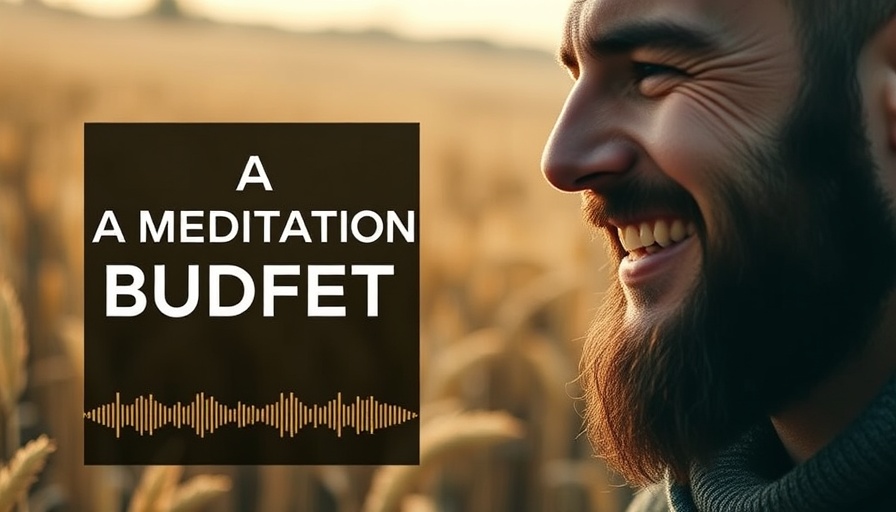
Diving into the Rich World of Meditation
Have you ever asked yourself why there's a vast array of meditation practices, each seemingly advocating different techniques and philosophies? It's similar to the diverse world of sports; just like some sports have conflicting rules, meditation encompasses various practices that may appear contradictory yet share a common foundation.
In essence, meditation is not a monolithic practice. Meditation teacher Toby Sola offers a refreshing perspective by likening the concept of meditation to that of sports: both domains develop vital skills—concentration, clarity, and balance. As you consider exploring meditation or perhaps integrating new techniques into your practice, understanding these foundational skills can be incredibly enlightening.
A Mindful Buffet: Different Techniques to Explore
Today we look into three distinct techniques that showcase this diversity within meditation. First, let’s explore the concept of “noting and labeling.” This practice emphasizes acknowledging your immediate sensory experiences. Imagine sitting comfortably, your spine lengthened, shoulders relaxed. As you breathe, you bring your awareness to the sounds around you—maybe distant traffic, the chatter of people, or simply the tranquility of silence. The aim here is to gently redirect your focus back to these sounds whenever your mind wanders.
Nurturing Positive Thoughts
The second technique is something I like to call “nurture positive.” Unlike the previous technique, which focuses on simply observing, this practice encourages you to intentionally create and dwell on positive thoughts or feelings. You might focus on a memorable phrase or an uplifting aspiration—something that brings a genuine smile to your heart. Give yourself the space to recite these affirmations, allowing gratitude and joy to wash over you.
Letting Go and Staying Curious
Finally, we arrive at our third technique. This practice encourages a state of release; rather than fixate on any single thought or intention, the focus here is to let your mind remain open—free and unattached. If feelings of wanting to control your thoughts arise, acknowledge them and then consciously let them go. This approach fosters a spaciousness in the mind, cultivating a sense of curiosity rather than constraint.
Why Explore Different Techniques?
For those in the 50-70 age range, engaging with meditation can bring numerous benefits, from alleviating stress to enhancing emotional resilience. As you embark on this journey to discover which meditation approach resonates with you, it's essential to recognize that each technique has its unique benefits.
By diversifying your practice, you not only enrich your experience but also find the method that best aligns with your personal objectives. Whether you're seeking relaxation, clarity, or emotional balance, these different approaches can cater to your specific needs, offering a more holistic experience.
Taking Action: Start Your Meditation Journey Today
As you dive into the world of meditation, I encourage you to experiment with these techniques in your daily routine. Take a few moments each day to apply what you've learned—be it through noting and labeling, nurturing positive feelings, or simply letting go. By doing so, you'll cultivate a deeper awareness of yourself and the world around you, ultimately leading to a more mindful and fulfilling life.
Remember, meditation is a practice, a journey towards self-discovery and mindfulness. Your wellness journey is uniquely yours, so embrace it with an open heart and mind! What techniques resonate with you the most? Start your exploration today and discover the profound impact meditation can have on your life!
 Add Row
Add Row  Add
Add 




Write A Comment